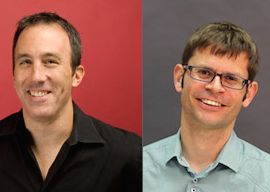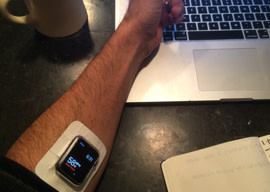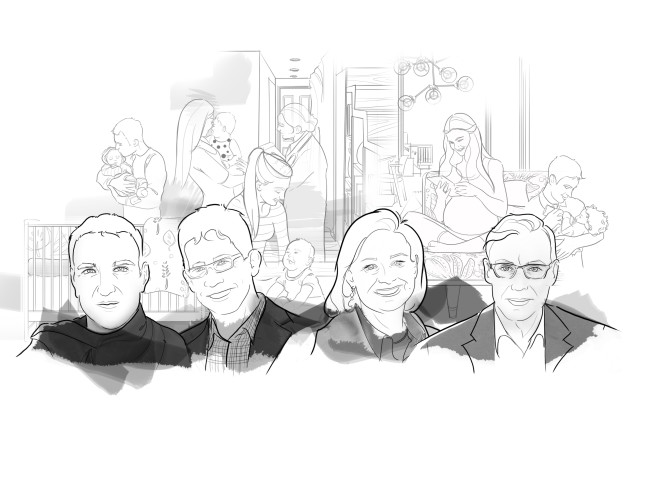What can we make of the Internet of Things? I recently attended Mass TLC’s The Value of Things conference, a gathering of software developers, middleware providers, professors, data scientists, and software platform vendors, to educate myself on how startups and enterprise organizations alike are creating more sophisticated systems to capture data, making sense of what they gather, and identifying the human impact of these technological advancements.
We’ve really been thinking about connecting objects to the Internet since 1999, as a way to learn more about the world around us. A highlight of the day for many was the afternoon keynote from MIT Professor Sanjay Sarma, founder of the school’s Auto-ID center. Sarma spoke in detail about RFID tags and sensors, which could be placed in cars, under carpets, and–more recently–in retail stores to share information about clothing.
Sensors were a key topic, with the central question being, how do we capture data? Another focus was the acknowledgement that data needs to be turned into information, in order to make it meaningful to all parties involved.
One way to target the capture and productive analysis of data is to create solutions that hyper-specialize in narrow verticals. Take, for example, panelist Leo Koenig of Woo Sports, a Boston-area startup that places sensors on sports equipment to measure performance. Not only is it key that Koenig is creating meaning for his customers by delivering proof that they are improving at their sport, but he also argues that mounting his device directly on a piece of equipment— such as a surfboard, skateboard, golf club, etc.—will ensure a more accurate reading of factors, such as height and speed.
Other speakers cited smart farming as a use case for IoT, where sensors measure crop and water needs. Also mentioned were patient monitoring systems for in-home, end of life care. The monitors signal in professional caregivers, but only when needed. Healthcare in general was identified as an industry ripe for smart uses of data.
While security was a hot topic, privacy was not. Implicit in the conversations, though, was that much of this data collection is passive; car insurance companies will track mileage and speed as a measure for coverage thresholds and costs, or sensors in a conference room carpet will register if they detect moisture, alerting a janitor to clean the space. What’s active is the translation of data into actionable information, and thereby value. Speaker Poul Peterson of bigml asserts that making sense of big data still requires human logic, and that makes predictive analytics hard. We’ve made strides in the collection of data, but segmenting, analyzing, and taking action remain challenging.
making sense of big data still requires human logic, and that makes predictive analytics hard.
The security theme received the most airtime during the closing session, “How Security Shifts in the World of IoT,” which featured a pair of keynotes from IBM’s Michael Curry and recent Intel expat, Andy Thurai. Curry walked us through the security requirements in this age, detailing how devices, data, and networks must be designed with that concern in mind.
Thurai dubs our contemporary time the “data economy” – an age where data is the new commodity, and where cheap data collection – not sensors – is paramount. He pointed to a new kind of home intrusion, as well as the frightening potential for medical devices to be hacked. Responsible systems and information design must be designed with security in mind. Healthcare was specifically identified as the most serious space for concerns around security.
Beyond this need, defining a common architecture is a basic requirement for IoT to become a successful piece of our lives. As Chris Rezendes outlined in a session on consultative selling in the space, IoT companies win business with a highly customized pitch and a deep understanding of a business’ problem. Rezendes articulated the value of a skilled consultant in guiding an organization to an understanding of what their world will look like post implementation—showing them what they stand to gain by harnessing consumer data.
As Sarma highlighted in his keynote speech, hub and spoke models always win. He believes that this solution is in the cloud, which will act as an intermediary between the data sender and sensor.
At Continuum, we believe big data can’t spawn a classic disruptive innovation—but it can prompt sustaining ones.
At Continuum, we believe big data can’t spawn a classic disruptive innovation—but it can prompt sustaining ones. We’re thinking about how to use it in ways that not only respect privacy and security, but also consider what types of experiences will deliver value to the business and customer sides of the relationship. Opinions shared at The Value of Things were concerned with delivering business value on the corporate side. Of deep interest to our organization is creating meaningful experiences that will enhance peoples’ lives. How will my trip to Macy’s be made easier by having digital scanners on jeans? How will a checkout employee at a grocery store be empowered to deliver better customer service based on the data that management has gathered on customer buying behaviors? Gadgets, sensors, and smart architecture are just one side of that equation.





